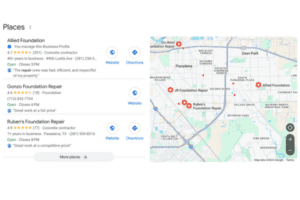In the ever-evolving world of digital marketing, small businesses are constantly seeking ways to reach their target audience more effectively and efficiently. One powerful strategy that has gained traction in recent years is geo-targeting. This technique allows businesses to deliver personalized content, ads, and promotions based on the geographical location of potential customers. For small business owners, understanding and implementing geo-targeting can be a game-changer, offering a more focused approach to marketing that can lead to increased engagement, conversions, and ultimately, business growth.
What is Geo Targeting?
Geo-targeting is a digital marketing strategy that uses geographic data to deliver specific content or advertisements to users based on their physical location. This location can be as broad as a country or as specific as a city, neighborhood, or even a street. Geo-targeting leverages various technologies, such as IP addresses, GPS, and Wi-Fi networks, to determine a user’s location and serve them relevant content accordingly.
For example, if you own a small bakery in Ft. Walton Beach, FL, you can use geo-targeting to show ads for your bakery to people who are physically located within a certain radius of your shop. This ensures that your marketing efforts are reaching individuals who are more likely to visit your business, rather than wasting resources on a broader, less targeted audience.
How Does Geo Targeting Work?
Geo-targeting relies on several methods to pinpoint a user’s location:
- IP Address: Every device connected to the internet has an IP (Internet Protocol) address, which can provide general information about the user’s location. While not as precise as other methods, IP-based geo-targeting is useful for targeting users at the country, state, or city level.
- GPS and Mobile Data: Most smartphones are equipped with GPS technology, allowing for highly accurate location tracking. This data is invaluable for targeting users in real-time based on their exact location, such as when they are near your business or attending a local event.
- Wi-Fi Networks: Devices connected to Wi-Fi networks can be geo-targeted based on the location of the Wi-Fi router. This method is particularly useful for businesses that want to target users in specific buildings, such as shopping malls, airports, or office complexes.
- Beacon Technology: Beacons are small devices that use Bluetooth to transmit signals to nearby smartphones. Businesses can place beacons in specific locations to send targeted messages or offers to customers when they are in close proximity to the beacon.
The Benefits of Geo Targeting for Small Businesses
For small businesses, geo-targeting offers a range of benefits that can enhance marketing efforts and improve overall business outcomes.
- Increased Relevance and Engagement
One of the primary advantages of geo-targeting is the ability to deliver highly relevant content to your audience. When customers receive ads or promotions that are tailored to their specific location, they are more likely to engage with your brand. For example, a local restaurant can use geo-targeting to promote lunch specials to nearby office workers or offer discounts to residents within a certain neighborhood. This level of personalization not only captures the attention of potential customers but also encourages them to take action, such as visiting your store or making a purchase.
- Cost-Effective Marketing
Small businesses often operate with limited marketing budgets, so it’s essential to make every dollar count. Geo-targeting allows you to focus your marketing efforts on the areas where you are most likely to see a return on investment. Instead of casting a wide net with a broad advertising campaign, you can zero in on specific locations where your target audience is concentrated. This precision helps reduce wasted ad spend and ensures that your marketing dollars are being used to reach the right people at the right time.
- Improved Local SEO
Search engine optimization (SEO) is critical for any business looking to attract online traffic, and local SEO is particularly important for small businesses that rely on local customers. Geo-targeting plays a significant role in boosting your local SEO efforts by helping your business appear in location-based search results. By optimizing your website and online content with location-specific keywords and information, you can increase your visibility in local searches and drive more traffic to your site. This is especially valuable for businesses like retail stores, restaurants, or service providers that cater to a local clientele.
- Enhanced Customer Experience
Today’s consumers expect personalized experiences, and geo-targeting allows you to deliver just that. By tailoring your marketing messages to the specific needs and interests of customers in different locations, you can create a more personalized and relevant experience. For instance, a clothing boutique could use geo-targeting to promote winter coats to customers in colder regions, while offering summer dresses to those in warmer climates. This level of customization not only enhances the customer experience but also increases the likelihood of conversions.
- Real-Time Marketing Opportunities
Geo-targeting enables you to take advantage of real-time marketing opportunities by reaching customers when they are most likely to engage with your business. For example, a coffee shop could use geo-targeting to send a discount offer to people in the area during the morning rush hour, encouraging them to stop by for a cup of coffee on their way to work. This type of timely and location-based marketing can drive immediate foot traffic to your business and boost sales.
- Competitive Advantage
In a competitive market, small businesses need to find ways to stand out. Geo-targeting gives you a competitive edge by allowing you to reach customers in your immediate vicinity before your competitors do. By delivering timely and relevant content to local customers, you can build brand awareness and loyalty, positioning your business as the go-to option in your area.
How to Implement Geo Targeting in Your Marketing Strategy
Implementing geo-targeting in your marketing strategy doesn’t have to be complicated. Here are a few steps to get started:
- Define Your Target Locations: Identify the geographical areas that are most important to your business. This could be based on where your existing customers are located or where you see the most potential for growth.
- Create Location-Specific Content: Develop marketing messages, ads, and promotions that are tailored to each target location. Consider the unique needs, preferences, and behaviors of customers in each area.
- Use Geo-Targeted Ads: Leverage platforms like Google Ads, Facebook, or Instagram to create geo-targeted ad campaigns. These platforms offer various targeting options, allowing you to reach users based on their location.
- Monitor and Optimize: Track the performance of your geo-targeted campaigns and make adjustments as needed. Use analytics to determine which locations are generating the most engagement and conversions, and allocate more resources to those areas.
Geo Targeting Is a Useful Tool For Small Businesses
Geo-targeting is a powerful tool to help small businesses reach their target audience more effectively, increase engagement, and drive business growth. By delivering personalized, location-based content, you can create a more relevant and timely marketing experience for your customers. Whether you’re looking to boost foot traffic to your store, improve local SEO, or gain a competitive edge, geo-targeting offers a strategic advantage that can take your small business to the next level.















